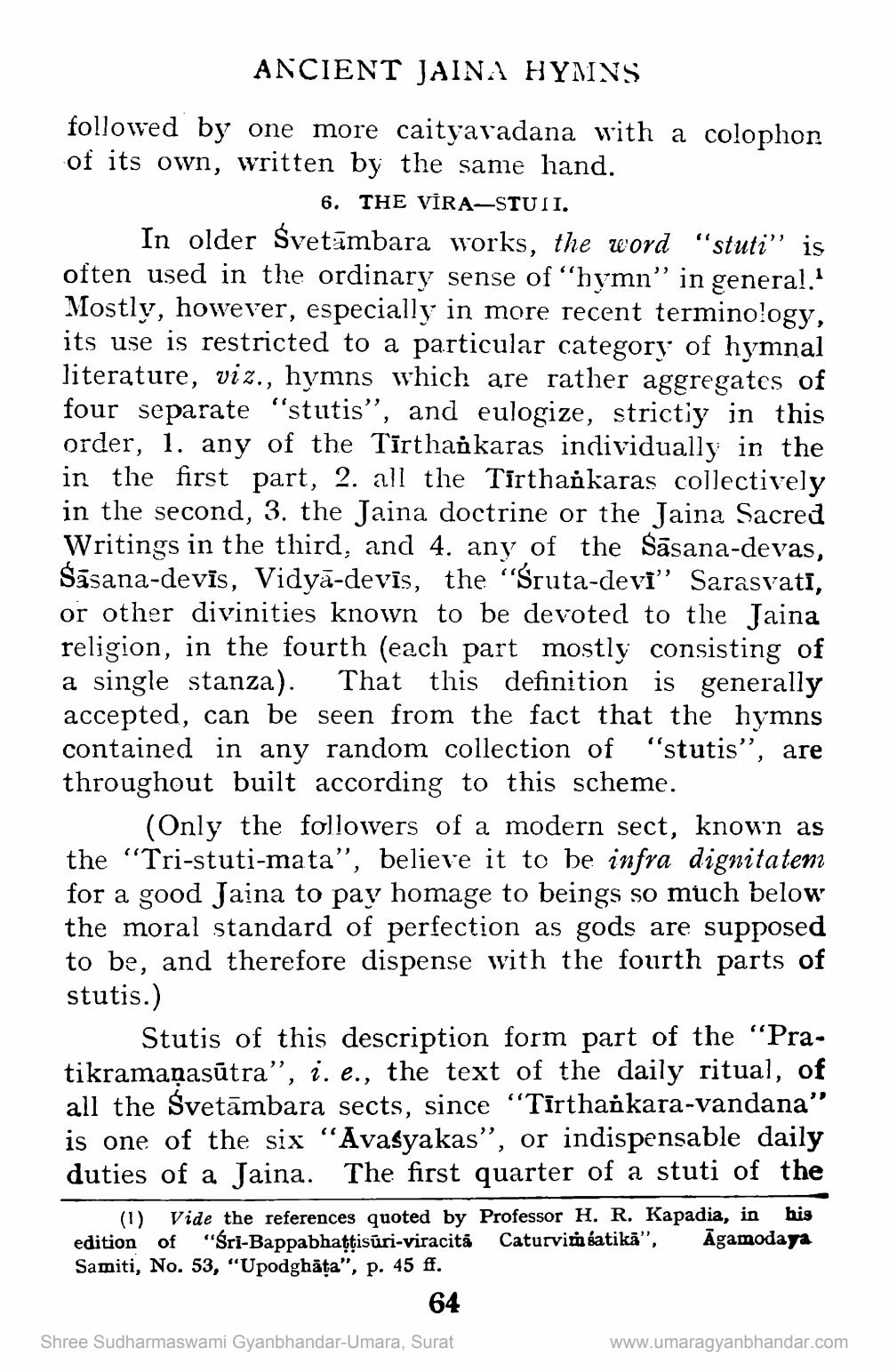________________
ANCIENT JAINA HYMNS
followed by one more caityavadana with a colophon of its own, written by the same hand.
6. THE VIRA–STUII. In older Svetāmbara works, the word "stuti” is often used in the ordinary sense of “hymn” in general.' Mostly, however, especially in more recent terminology, its use is restricted to a particular category of hymnal literature, viz., hymns which are rather aggregates of four separate "stutis”, and eulogize, strictiy in this order, 1. any of the Tīrthankaras individually in the in the first part, 2. all the Tirthankaras collectively in the second, 3. the Jaina doctrine or the Jaina Sacred Writings in the third, and 4. any of the Sāsana-devas, Sāsana-devīs, Vidyā-devīs, the "Sruta-devi” Sarasvati, or other divinities known to be devoted to the Jaina religion, in the fourth (each part mostly consisting of a single stanza). That this definition is generally accepted, can be seen from the fact that the hymns contained in any random collection of "stutis”, are throughout built according to this scheme.
(Only the followers of a modern sect, known as the "Tri-stuti-mata”, believe it to be infra dignitateni for a good Jaina to pay homage to beings so much below the moral standard of perfection as gods are supposed to be, and therefore dispense with the fourth parts of stutis.)
Stutis of this description form part of the "Pratikramaņasūtra”, i.e., the text of the daily ritual, of all the Svetāmbara sects, since “Tīrthankara-vandana" is one of the six "Avasyakas”, or indispensable daily duties of a Jaina. The first quarter of a stuti of the
(1) Vide the references quoted by Professor H. R. Kapadia, in his edition of "Śri-Bappabhattisüri-viracitá Caturviti satikā", Agamoda ya Samiti, No. 53, “Upodghāta", p. 45 ff.
64
Shree Sudharmaswami Gyanbhandar-Umara, Surat
www.umaragyanbhandar.com




